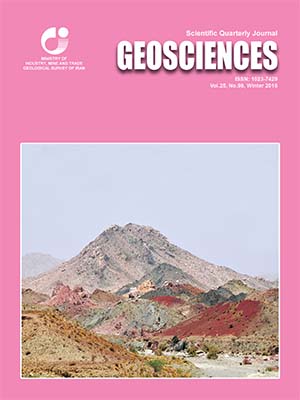Document Type : Original Research Paper
Authors
1 Ph.D. Student, Department of Geology, Shahid Beheshti University, Tehran, Iran
2 Associate Professor, Department of Geology, Sistan & Baluchestan University, Zahedan, Iran
3 Assistant Professor, Department of Geology, Sistan & Baluchestan University, Zahedan, Iran
4 Ph.D. Student, Islamic Azad University, Science and Research Branch, Tehran, Iran
Abstract
Distinct cathodoluminescence (CL) properties of certain minerals such as quartz allow rapid identification of the different mineral constituents and their distribution within rocks using CL microscopy. Quartz is not only one of the main mineral in felsic intrusive rocks associated with porphyry copper deposits, but is the most abundant hydrothermal mineral in potassic and phyllic alterations. Although the study of the quartz in Back Scattered Electrons (BSE) images is useful but study of quartz by Scanning Electron Microscope- Cathodoluminescence (SEM-CL) revealed many textures (zoning, healed microfractures and cobweb textures) that cannot be observed in backscattered electrons images. The observed zonations reflect chemical and/or physical changes during growth in the precipitation environment (i.e. concentric zonation). Healed microfractures and cobweb textures are present in some of the quartz grains. The main purpose of this study is investigation of quartz textures and generations by SEM-CL in potassic and phyllic zones of the Sarcheshmeh porphyry copper ore deposit. Investigation of quartz using SEM-CL in the deposit revealed different generations of quartz (in phenocrysts and veins) that have been precipitated under different conditions. Quartz in the studied samples predominantly exhibits blue luminescence.
Keywords

